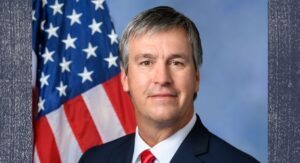Steve Marshall joins 13 AGs to petition court over federal mining rule they argue violates states’ rights
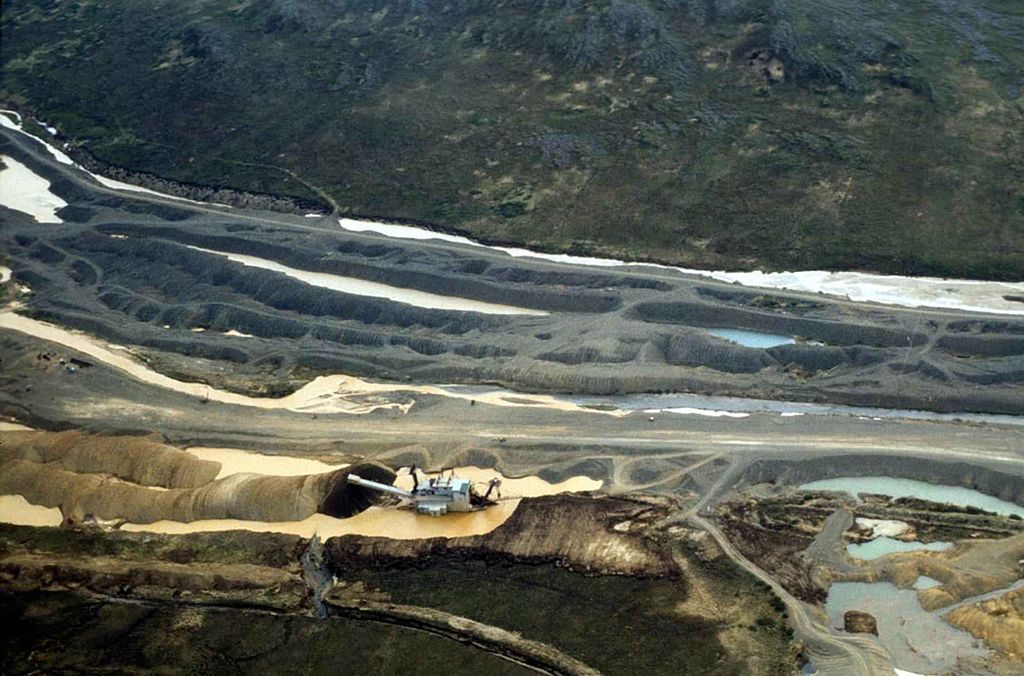
Joe Biden OKs controversial Alaska oil project, draws ire of environmentalists

The Biden administration said Monday it is approving a huge oil-drilling project on Alaska’s petroleum-rich North Slope, a major environmental decision by President Joe Biden that drew quick condemnation as flying in the face of his pledges to slow climate change. The announcement came a day after the administration, in a move in the other direction toward conservation, said it would bar or limit drilling in some other areas of Alaska and the Arctic Ocean. The approval of Conoco-Phillips’ big Willow drilling project by the Bureau of Land Management will allow three drill sites, including up to 199 total wells. Two other drill sites proposed for the project will be denied. ConocoPhillips Chairman and CEO Ryan Lance called the order “the right decision for Alaska and our nation.” The order, one of the most significant of Interior Secretary Deb Haaland’s tenure, was not signed by her but rather by her deputy, Tommy Beaudreau, who grew up in Alaska and briefed state lawmakers on the project Monday. Haaland was notably silent on the project, which she had opposed as a New Mexico congresswoman before becoming Interior secretary two years ago. Climate activists were outraged that Biden approved the project, which they say puts his climate legacy at risk. Allowing the drilling plan to go forward marks a major breach of Biden’s campaign promise to stop new oil drilling on federal lands, they say. However, administration officials were concerned that ConocoPhillips’ decades-old leases limited the government’s legal ability to block the project and that courts might have ruled in the company’s favor. Monday’s announcement is not likely to be the last word, with litigation expected from environmental groups. The Willow project could produce up to 180,000 barrels of oil a day, create up to 2,500 jobs during construction and 300 long-term jobs, and generate billions of dollars in royalties and tax revenues for the federal, state, and local governments, the company said. The project, located in the federally designated National Petroleum Reserve-Alaska, enjoys widespread political support in the state. Alaska’s bipartisan congressional delegation met with Biden and his advisers in early March to plead their case for the project, and Alaska Native state lawmakers recently met with Haaland to urge support. Sen. Lisa Murkowski, R-Alaska, said Monday the decision was “very good news for the country.” “Not only will this mean jobs and revenue for Alaska, it will be resources that are needed for the country and for our friends and allies,” Murkowski said. “The administration listened to Alaska voices. They listened to the delegation as we pressed the case for energy security and national security.” Fellow Republican Sen. Dan Sullivan said conditions attached to the project should not reduce Willow’s ability to produce up to 180,000 barrels of crude a day. But he said it was “infuriating” that Biden also had moved to prevent or limit oil drilling elsewhere in Alaska. Environmental activists who have promoted a #StopWillow campaign on social media were fuming at the approval, which they called a betrayal. “This decision greenlights 92% of proposed oil drilling (by ConocoPhllips) and hands over one the most fragile, intact ecosystems in the world to” the oil giant, said Earthjustice President Abigail Dillen. “This is not climate leadership.″ Biden understands the existential threat of climate change, “but he is approving a project that derails his own climate goals,″ said Dillen, whose group vowed legal action to block the project. John Leshy, who was a top Interior Department lawyer in the Clinton administration, said Biden’s climate goals aren’t the only factor in an environmental review process that agencies must follow. Leshy, a professor at the University of California College of the Law, San Francisco, called the decision on Willow defensible, adding: “I think it reflects a balancing of the things they have to balance, which is the environmental impact and the lease rights that Conoco has.” Christy Goldfuss, a former Obama White House official who now is a policy chief at the Natural Resources Defense Council, said she was “deeply disappointed″ at Biden’s decision to approve Willow, which the BLM estimates would produce more than 239 million metric tons of greenhouse gases over the project’s 30-year life, roughly equal to the combined emissions from 1.7 million passenger cars. “This decision is bad for the climate, bad for the environment, and bad for the Native Alaska communities who oppose this and feel their voices were not heard,″ Goldfuss said. Anticipating that reaction among environmental groups, the White House announced on Sunday that Biden will prevent or limit oil drilling in 16 million acres in Alaska and the Arctic Ocean. The plan would bar drilling in nearly 3 million acres of the Beaufort Sea — closing it off from oil exploration — and limit drilling in more than 13 million acres in the National Petroleum Reserve. The withdrawal of the offshore area ensures that important habitat for whales, seals, polar bears, and other wildlife “will be protected in perpetuity from extractive development,″ the White House said in a statement. The conservation announcement did little to mollify activists. “It’s a performative action to make the Willow project not look as bad,” said Elise Joshi, the acting executive director of Gen-Z for Change, an advocacy organization. City of Nuiqsut Mayor Rosemary Ahtuangaruak, whose community of about 525 people is closest to the proposed development, has been outspoken in her opposition, worried about impacts to caribou and her residents’ subsistence lifestyles. “My constituents and community will bear the burden of this project with our health and our livelihoods,″ she said. But there is “majority consensus” in the North Slope region supporting the project, said Nagruk Harcharek, president of the group Voice of the Arctic Iñupiat, whose members include leaders from across much of that region. The conservation actions announced Sunday block drilling in the Beaufort Sea and build on President Barack Obama’s actions to restrict drilling there and in the Chukchi Sea. Separately, the administration moved to protect more than 13 million acres within the petroleum reserve, a 23-million-acre chunk of land on Alaska’s North Slope set
Federal dollars to address Alabama’s abandoned mines
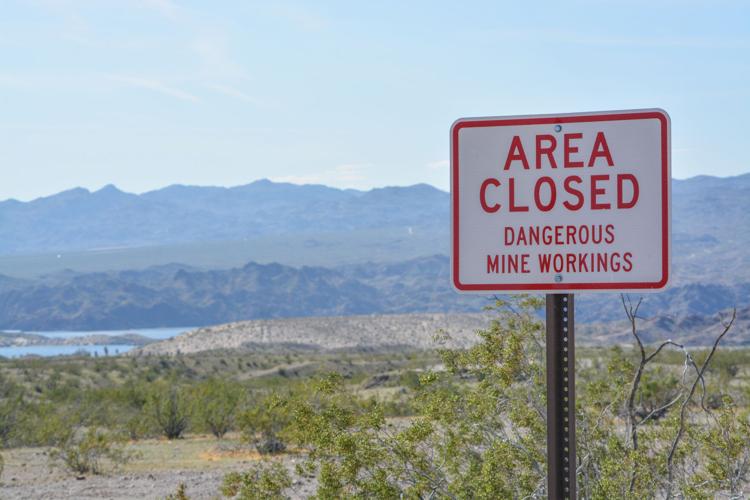
Alabama is receiving an infusion of federal funds to address abandoned mine lands. Through the Infrastructure Investment and Jobs Act, President Joe Biden said Alabama is poised to receive $20,450,847 in federal funding that is to be used to create good-paying union jobs in an effort to catalyze economic opportunity in the state by reclaiming abandoned coal mines. The funding would be used to clean up hazardous sites, according to the release, while at the same time address environmental injustices in the state. Department of the Interior Secretary Deb Haaland, in a release, said it is an investment to clean up environmental hazards that are harming communities. “Reclaiming and restoring these sites will create jobs, revitalize economic activity, and advance outdoor recreation,” she said. “I am so excited about what we can do with these new resources today and for future generations.” According to the release, millions of Americans live just 1 mile from an abandoned coal mine or orphaned oil or gas well. The law provided $11.3 billion over a span of 15 years to address the issue. Abandoned Mine Lands reclamation, according to the release, sustains jobs in coal communities through investments in projects that close dangerous mine shafts, reclaim unstable slopes, improve water quality through treatment of acid mine drainage, and also restores water supplies that were damaged through mining. Reclaims lands, according to the release, are then used for recreational facilities or economic revitalization. Federal dollars under the plan will be prioritized to projects that employ dislocated coal miners. Republished with the permission of The Center Square.
Robert Aderholt and Republican leadership urge Joe Biden to invest in American energy
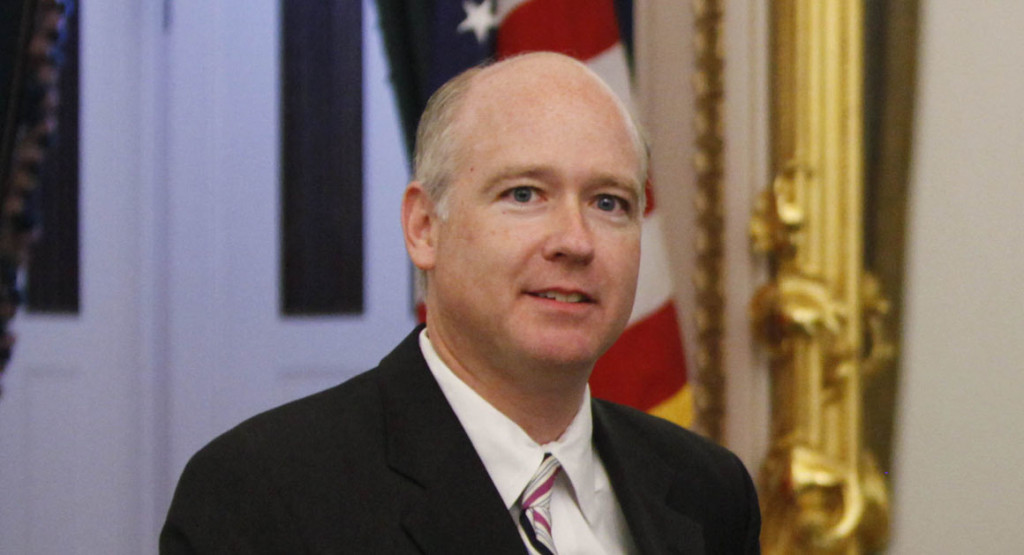
Congressman Robert Aderholt joined House Republican Whip Steve Scalise (R-Louisiana), HEAT Co-Chairs Rep. Jeff Duncan (R-South Carolina) and Rep. Markwayne Mullin (R-Oklahoma), and 126 other members in a letter led by Whip Scalise to President Joe Biden urging the President to reverse what the GOP calls “his anti-American energy policies. “President Biden has no plans, or desire, to lower energy costs for the long term,” Rep. Aderholt warned on social media after Biden made his pre-election final release of America’s Strategic Petroleum Reserves. “Instead, he releases oil from our emergency supply to try and bring them down ahead of the election. Basically, a gimmick. We need more American energy and a real energy plan. Not an election gimmick.” Congressman Mike Rogers agreed with Aderholt’s assessment of the release four weeks before the election. “Biden is depleting our Strategic Petroleum Reserve (which is reserved for emergency situations) for political gain,” Rogers wrote on Facebook. The GOP members of Congress urged Biden to issue a five-year offshore oil and natural gas leasing plan after Interior Secretary Deb Haaland let the previous five-year plan expire. “We write to express our deep concern with your ongoing war on American energy. Unfortunately, since taking office, you have fulfilled your campaign promises to shut down American oil and gas production,” Scalise et. al. wrote. “As a result, America is no longer energy independent, and our nation is less secure. In order to reduce the dramatically higher energy costs your actions have placed on hard-working families, we strongly request you reverse course and work with us to unleash American energy. Specifically, we ask you to take immediate action by issuing a five-year leasing plan that includes regular annual lease sales in America’s offshore areas.” “Undermining oil and gas production has severe consequences,” the GOP Congressmembers wrote. “For example, Europe is in a full-blown energy crisis, and we are seeing the same issues manifest in California with their governor telling people to turn thermostats above 78 degrees, avoid using appliances, and limit charging electric vehicles when they get home from work, all while he mandated a ban on fossil-fuel cars. Europe and California should both serve as a cautionary tale against the devastating anti-fossil fuel policies your administration is currently pursuing. To be clear, already sky-high energy prices will likely worsen unless you immediately reverse course and drastically increase exploration, leasing, and production of oil and natural gas here at home. And keep in mind your extremist policies are hurting low and middle-income families the hardest.” The letter urges President Biden to immediately announce a new offshore leasing plan and unleash American energy production. The GOP lawmakers claim that driving more investment into United States’ energy sector would lower gas and electricity prices for struggling families and guarantee a steady flow of American energy into the future. “We’ve seen the future of Biden and [Nancy] Pelosi’s reckless Green New Deal policies play out in Europe with mushrooming energy costs, and allowing the same devastating fate for American families would be unconscionable,” Scalise said in a statement. “Instead of begging OPEC and Russia to increase oil production, I have called on President Biden to look to places like offshore Louisiana and Port Fourchon in my district so we can unleash American energy, create good jobs, and lower costs for hard-working families.” Democrats and some environmentalists claim that increased exploration and production of American fossil fuels could have deleterious effects on the world’s climate. The letter was also signed by Republican Policy Committee Chairman Gary Palmer and Alabama Reps. Jerry Carl and Barry Moore. Aderholt has represented Alabama’s Fourth Congressional District since 1996. He faces Democratic nominee Rick Neighbors and Libertarian Johnny Cochran in the November 8 general election. To connect with the author of this story, or to comment, email brandonmreporter@gmail.com.
Marilynn Malerba sworn in as 1st Native American in U.S. Treasurer post
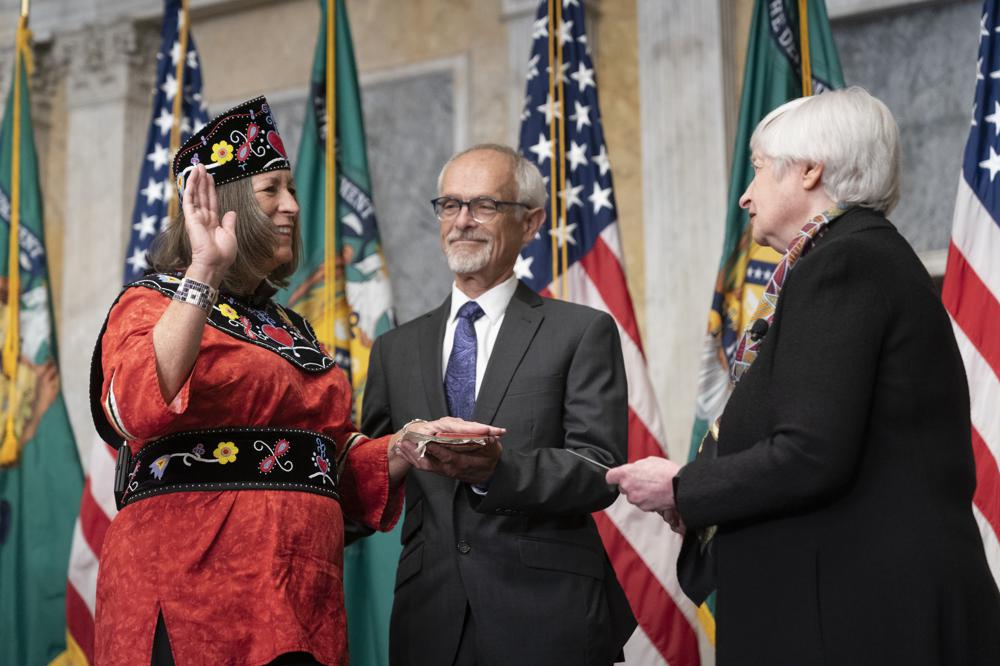
Mohegan Chief Marilynn “Lynn” Malerba was sworn in Monday as the Treasurer of the United States, the first Native American to hold that office. Her signature will now appear along with Treasury Secretary Janet Yellen on U.S. currency. Yellen hailed the appointment at the Treasury Department ceremony as a sign of the Biden administration’s “respect for, and commitment toward, our nation-to-nation relationship, trust and treaty responsibilities, and Tribal sovereignty and self-determination.” “For all our progress — there is more work to do to strengthen our nation-to-nation relationship with Tribal governments,” Yellen said in prepared remarks. They were joined by Interior Secretary Deb Haaland, the first Native American to lead that department, and members of Treasury’s Tribal Advisory Committee. Malerba, who will remain lifetime chief of the Mohegan Indian Tribe, which is made up of roughly 2,400 people, previously worked as a registered nurse and has served in various tribal government roles. Joe Biden appointed her U.S. treasurer in June and as overseer of a new Office of Tribal and Native Affairs at the Treasury Department. She is tasked with finding new ways to help tribes develop their economies to overcome challenges that are unique to tribal lands, among other responsibilities. As part of the ceremony, Malerba signed a book presented by Bureau of Engraving and Printing Director Len Olijar, who will engrave her signature. Her official signature will appear as “Lynn Roberge Malerba” in honor of her maiden name. A Treasury official said her name will appear on currency in the coming months. “We all know that, historically, many promises have not been kept to the indigenous peoples of this nation. But we can and will do better,” said Malerba, who wore a red and black tribal ensemble and matching headdress. “My appointment is a promise kept.” “When barriers to economic development are eliminated, tribal communities will thrive and prosper,” she said. “We know, when there is robust tribal economic development, our local and state communities prosper as well.” She added that the moment made her think deeply of her parents. “My name will be on currency when it was so difficult for them to get money in their lifetime,” she said during the ceremony. For Malerba, she said she hopes her presence at Treasury will help other Americans feel pride in honoring their culture. “Katantuoot, wuyunomsh United States qa wuyunomsh kiyawin,” she said. “Great spirit bless these United States and bless us all.” Republished with the permission of The Associated Press.
Interior Dept. gauging interest in Gulf of Mexico wind power
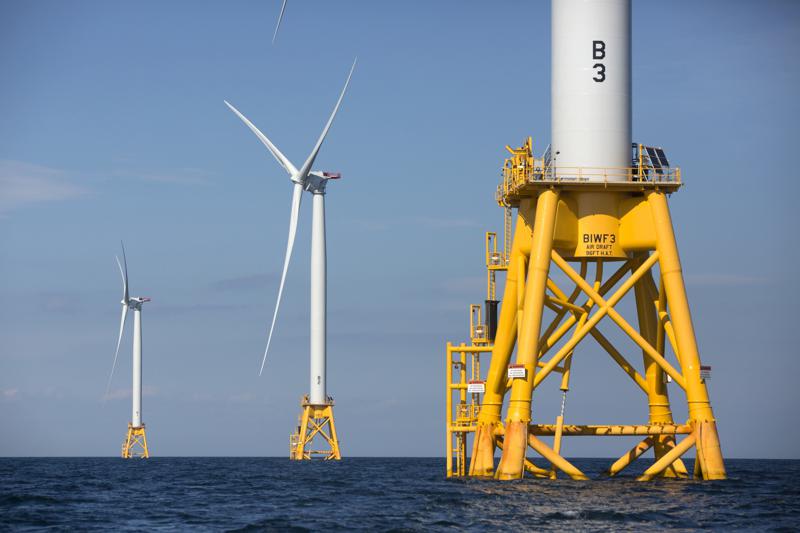
President Joe Biden’s administration wants to know whether offshore wind companies want to move into the Gulf of Mexico. The agency that oversees offshore leases will publish a request for interest Friday in the Federal Register for areas off Louisiana, Texas, Mississippi, and Alabama, the Interior Department said Tuesday. Those areas are largely in shallower waters where many wells have played out rather than the deep seas where the Gulf’s offshore oil and gas industry is now focused. Biden has said he wants enough wind-generated electricity for more than 10 million homes nationwide by 2030. Offshore wind development has the potential to create tens of thousands of good-paying, union jobs across the nation, said Interior Secretary Deb Haaland. Her agency’s request for interest from developers “is an important first step to see what role the Gulf may play in this exciting frontier,” she said. “The Gulf of Mexico is extremely well-positioned for the exploration of new offshore technologies and energy opportunities,” said Erik Milito, president of the National Ocean Industries Association, which includes companies building both wind and oil and gas facilities offshore. “Whether we are talking about offshore wind or other renewables such as hydrogen, expanding the energy portfolio of the Gulf of Mexico will depend upon a robust offshore oil and gas industry,” he said in an emailed statement. Offshore oil and gas companies are building wind farms in the Atlantic, Milito said. He said he expects the government proposal to generate interest, but companies will need time to study and understand the market. Although the main focus is on wind energy, the Bureau of Ocean Energy Management is also seeking information on other renewable energy technologies, the Interior Department said. As part of the Biden administration’s push for renewable energy, the Department of Energy has $3 billion in loan guarantees available to support offshore wind. It also has pledged $500 million to improve ports from which the huge turbines would be hauled out to sea. California and the U.S. government announced an agreement last month to open up areas off that state’s coast to the Pacific coast’s first commercial wind energy farms, using floating turbines. And in March, the Interior Department published a four-volume environmental impact statement for a proposed huge wind farm off Martha’s Vineyard in Massachusetts. That was a crucial step toward a decision on whether to approve what would be the nation’s first commercial-scale offshore wind power development. Friday’s publication will start a 45-day public comment period about developers’ interests, potential environmental consequences, and other uses of the proposed area. Those will be considered in deciding the next steps in renewable energy leasing in the Gulf of Mexico, the news release said. Milito said, “Our members are already figuring out how to diversify their Gulf of Mexico energy portfolio, through avenues like hydrogen production and carbon capture and storage, and there already is a natural fit with wind projects.” The government has leased about 1.7 million acres in the Outer Continental Shelf for offshore wind development and has 17 commercial leases on the Atlantic, from Cape Cod to Cape Hatteras, the Interior Department said. A Gulf of Mexico Intergovernmental Renewable Energy Task Force made up of federal, tribal, state, and local governments from the four states will hold its first meeting on June 15. The group will help coordinate planning, solicit feedback, and exchange scientific and process information, officials said. Republished with the permission of the Associated Press.
PCI Chairwoman Stephanie Bryan congratulates Deb Haaland for historic Dept. of Interior nomination
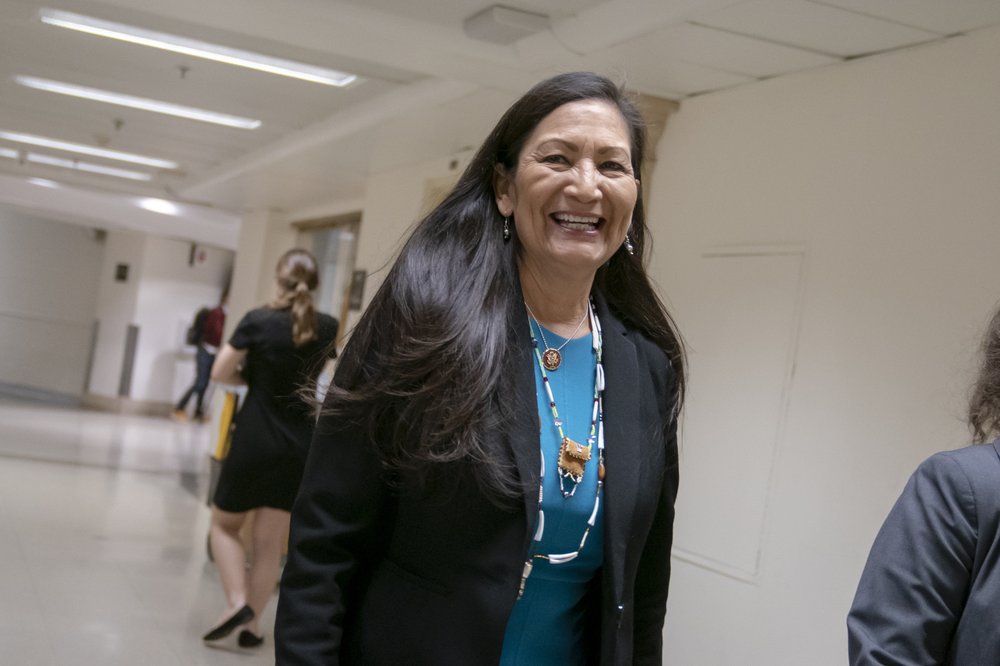
Stephanie Bryan, Poarch Band of Creek Indians Chairwoman, congratulated Representative Deb Haaland on her historic nomination by President-Elect Joe Biden to serve as the Secretary of the Department of the Interior. The Department of Interior has jurisdiction over a wide variety of government programs, including the Bureau of Indian Affairs. She will become the first Native American to lead the powerful federal agency. Haaland, 60, is a member of the Pueblo of Laguna tribe and lives in New Mexico. Haaland has represented New Mexico’s First Congressional District since 2018. She was one of two Native American women to be elected that year, making her one of the first Native American women to serve in Congress. Prior to this nomination, the Bureau of Indian Affairs has been run by non-Native officials, mostly male. For generations, the department worked to take control of Native American land, and attempted to assimilate them into white culture, Associated Press reported. Bryan stated, “My friend Deb has been a great advocate for Tribes during her time in the House of Representatives, and for that I want to thank her. It has been a pleasure to get to know her and see her passion for tribal priorities, and the Poarch Creek Indians have no doubt she will ably lead the Interior Department.” The Poarch Band of Creek Indians is the only federally recognized tribe in Alabama. They operate as a sovereign nation with their own system of government and bylaws. The Poarch Creek Indians are descendants of a segment of the original Creek Nation that once covered almost all of Alabama and Georgia. The Poarch Creeks were not removed from their tribal lands and have lived together for almost 200 years in and around the reservation in Poarch, Alabama.
In historic pick, Joe Biden taps Deb Haaland as interior secretary
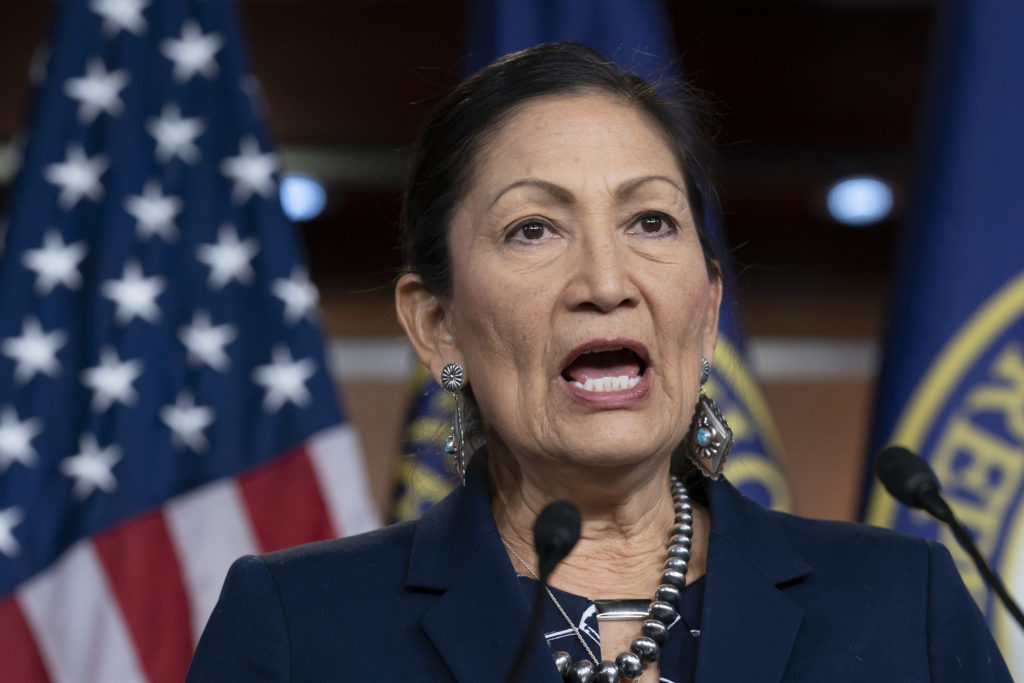
President-elect Joe Biden selected New Mexico Rep. Deb Haaland as his nominee for interior secretary on Thursday, a historic pick that would make her the first Native American to lead the powerful federal agency that has wielded influence over the nation’s tribes for generations. Tribal leaders and activists around the country, along with many Democratic figures, cheered Haaland’s selection after urging Biden for weeks to choose her to lead the Department of Interior. They stood behind her candidacy even when concerns that Democrats might risk their majority in the House if Haaland yielded her seat in Congress appeared to threaten her nomination. With Haaland’s nomination, Indigenous people will for the first time in their lifetimes see a Native American at the table where the highest decisions are made — and so will everyone else, said OJ Semans, a Rosebud Sioux vote activist who was in Georgia on Thursday helping get out the Native vote for two Senate runoffs. “It’s made people aware that Indians still exist,” he said. Haaland, 60, is a member of the Pueblo of Laguna and, as she likes to say, a 35th-generation resident of New Mexico. The role of interior secretary would put her in charge of an agency that has tremendous sway not only over the nearly 600 federally recognized tribes, but also over much of the nation’s vast public lands, waterways, wildlife, national parks, and mineral wealth. Haaland tweeted after the news was made public that “growing up in my mother’s Pueblo household made me fierce. “I’ll be fierce for all of us, our planet, and all of our protected land,” she pledged. Biden plans to introduce Haaland — and other picks for his Cabinet — at an event Saturday in Wilmington, Delaware. Her selection breaks a 245-year record of non-Native officials, mostly male, serving as the top federal official over American Indian affairs. The federal government often worked to dispossess Native Americans of their land and, until recently, to assimilate them into white culture. “You’ve got to understand — you’re taking Interior full circle,” said Arizona Rep. Raul Grijalva, chair of the House Natural Resources Committee and a champion of Haaland for the job. “For years, its legacy was the disenfranchisement of the Native people of this country, of displacement, of cultural genocide.” With Haaland’s nomination, “that in itself is a huge message,” Grijalva said. Navajo Nation President Jonathan Nez called it “truly a historic and unprecedented day for all Indigenous people.” “I am SO ELATED,” the head of progressive Democrats’ Sunrise Movement, Varshini Prakash, tweeted. “This will be the first time an Indigenous person – and a badass climate champion woman at that – will hold any presidential cabinet position. Congratulations to @JoeBiden for making history.″ Get-out-the-vote activists believe their efforts, and the Native vote, helped flip Arizona in particular for Biden and secure the presidency. “There’s a feeling something is changing,” said Ashley Nicole McCray, a member of the Absentee Kiowa tribe of Oklahoma and of an indigenous environmental coalition. “Finally, we’ve come to this point where Indigenous sentiment is no longer being silenced.” But Biden’s pick could further deplete, at least temporarily, the narrow majority Democrats maintain in the House. Biden has already selected several lawmakers from the chamber, including Louisiana Rep. Cedric Richmond and Ohio Rep. Marcia Fudge, to serve in his administration. Some on Biden’s transition team had expressed concerns about dipping further into the already thinned Democratic House majority for another senior administration posting. But Biden decided that the barrier-breaking aspect of her nomination and her experience as vice chair of the House Committee on Natural Resources made her the right pick for the moment. The president-elect has been methodically filling the posts in his Cabinet, adding North Carolina environmental official Michael Regan as his nominee to lead the Environmental Protection Agency. Biden introduced former South Bend, Indiana, mayor Pete Buttigieg earlier this week as his transportation secretary and announced Thursday that former Michigan Gov. Jennifer Granholm was his nominee for energy secretary. In a statement Thursday night, Biden said he had assembled a “brilliant, tested, trailblazing team” that “will be ready on day one to confront the existential threat of climate change.” “They share my belief that we have no time to waste to confront the climate crisis, protect our air and drinking water, and deliver justice to communities that have long shouldered the burdens of environmental harms,” the president-elect said. House Speaker Nancy Pelosi made it clear Wednesday that Biden had her blessing to choose Haaland, saying she would make an “excellent choice” as interior secretary. South Carolina Rep. James Clyburn, the No. 3 Democrat in the House and a close Biden ally, also supported Haaland for the job. Haaland is one of the first two Native American women in the House. She told The Associated Press before her nomination that see the difference her position in Congress made for ordinary Native Americans who came to her with business before the federal government. “They felt comfortable just launching into the issues they wanted,” Haaland told the AP in an interview before her appointment. They would say, for example, “Oh, we don’t have to explain tribal sovereignty to you,” meaning tribes’ constitutionally guaranteed status as independent nations. Haaland previously worked as head of New Mexico’s Democratic Party, as tribal administrator, and as an administrator for an organization providing services for adults with developmental disabilities. Born to a Marine veteran father and a Navy veteran mother, Haaland describes herself as a single mother who sometimes had to rely on food stamps. She says she is still paying off student loans after college and law school for herself and college for her daughter. New Mexico Sen. Tom Udall, who is retiring after 22 years in Congress and was initially considered the front-runner for interior secretary, congratulated Haaland on her selection, calling it “momentous and well-earned.’’ Previously, the highest-ranking administration official known to have Native American heritage was Charles Curtis, who served as Herbert Hoover’s vice president and whose mother was one-quarter Kaw tribe.


